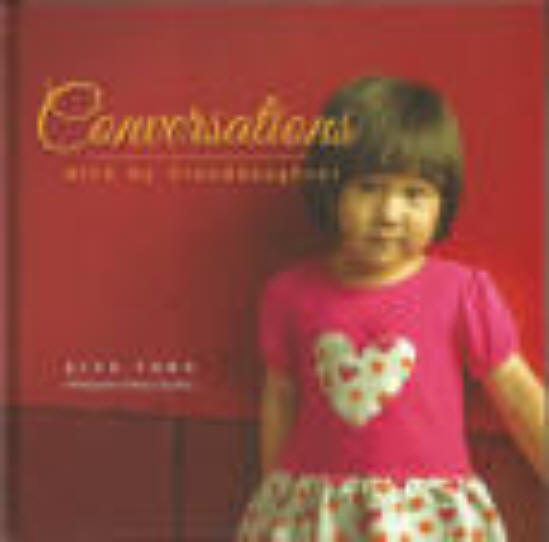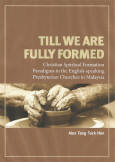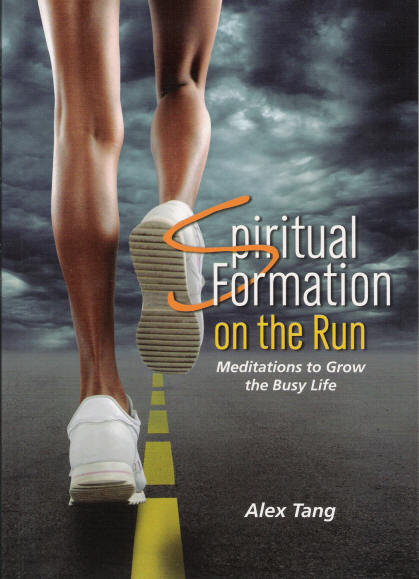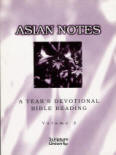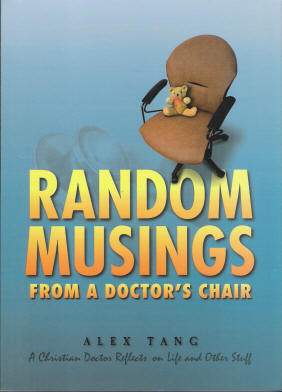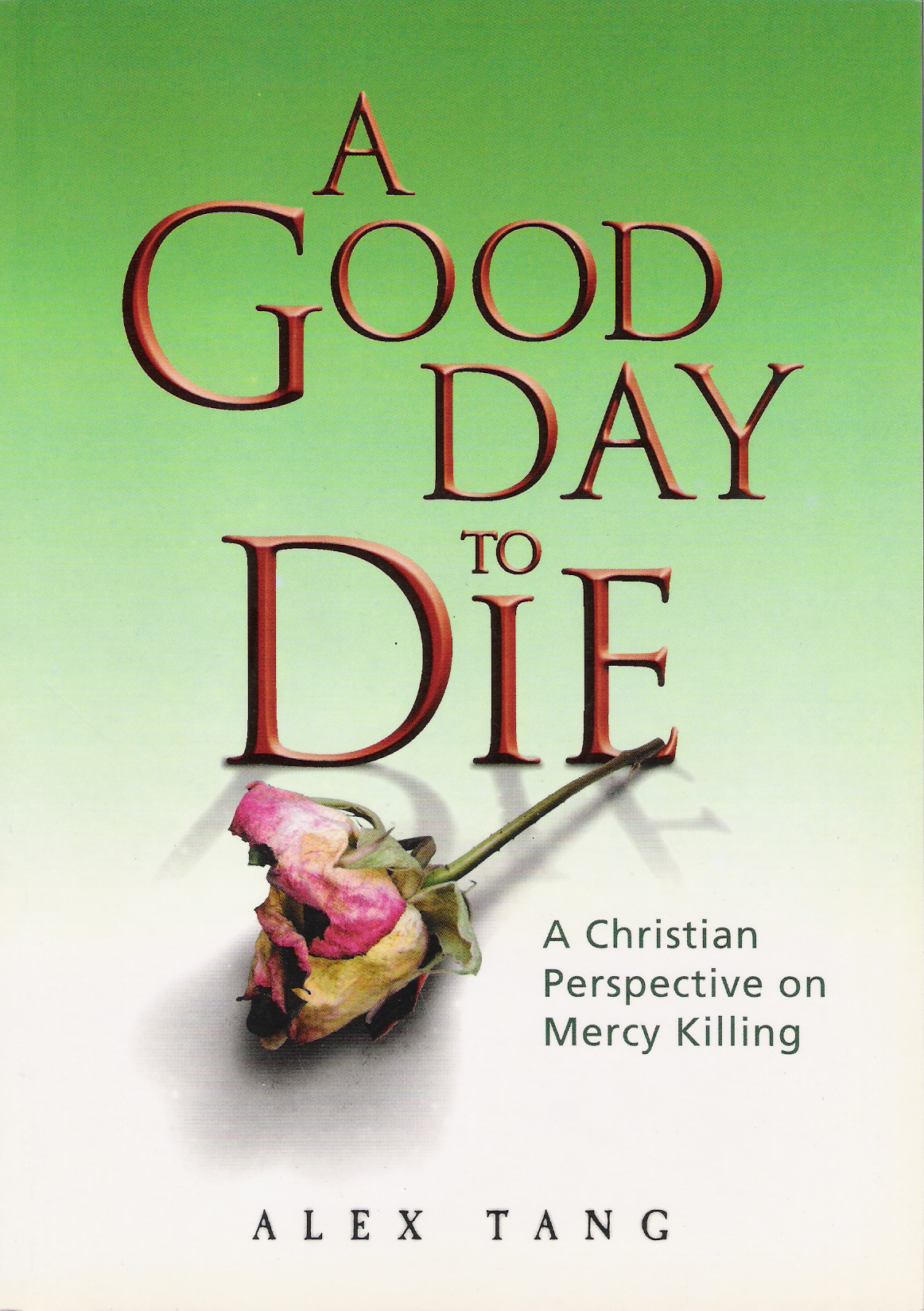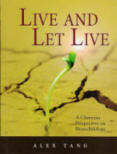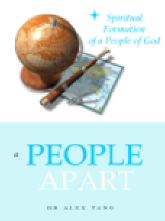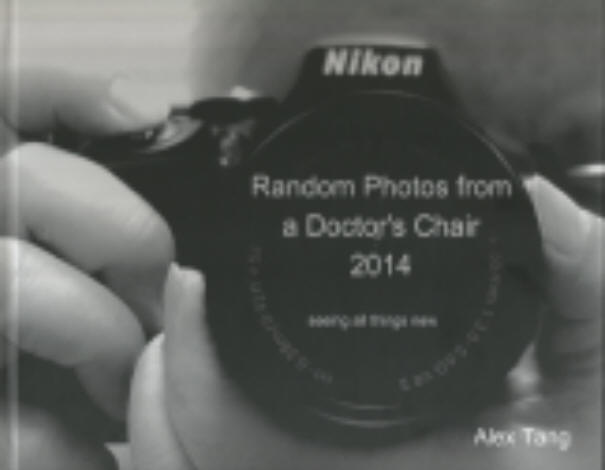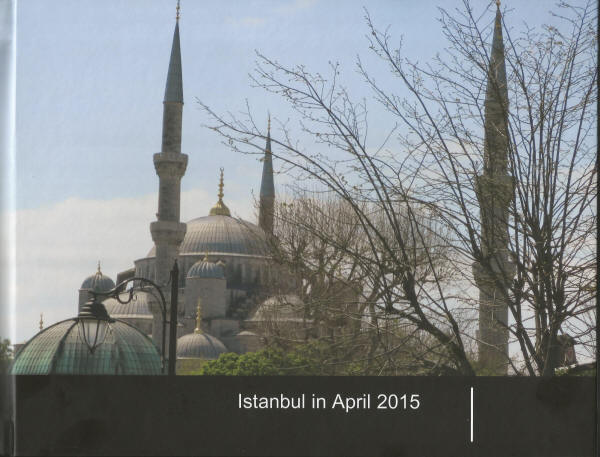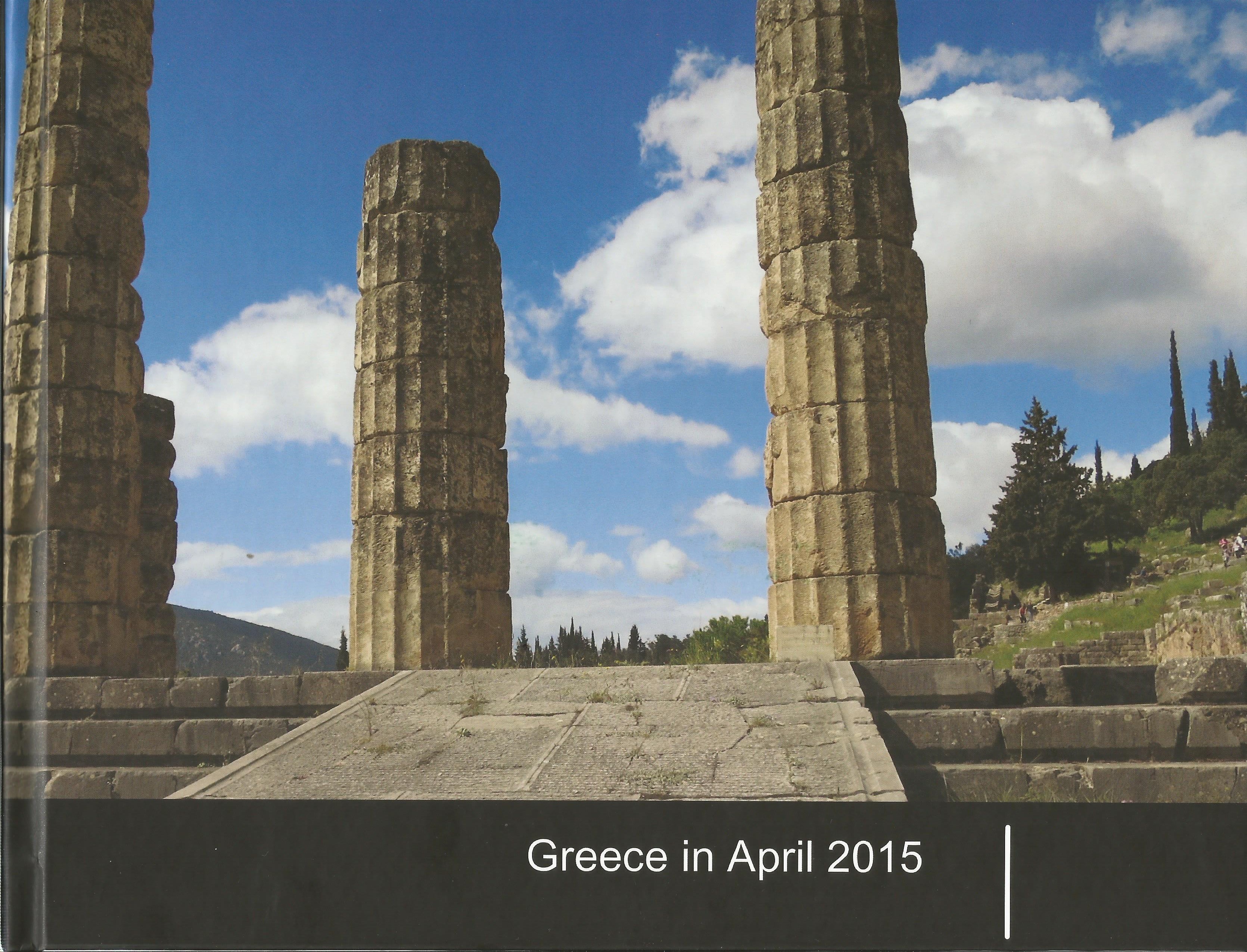Random Musings from a Doctor's Chair
My adventures with God,life and all these stuff.
Sunday, August 31, 2008
Saturday, August 30, 2008
The Dark Knight Revisited

This is a view critics sometimes ascribe to the Old Testament, filled with stories of God's people destroying God's enemies — men, women, and children. Like Batman, Samson excelled in hand-to-hand combat. He needed only the jawbone of a donkey to kill 1,000 Philistines (Judges 15:15-16).
read more
Labels: Comics and Mangas, Movies
Jesus for President

Jesus for President is a radical manifesto to awaken the Christian political imagination, reminding us that our ultimate hope lies not in partisan political options but in Jesus and the incarnation of the peculiar politic of the church as a people “set apart” from this world.
A fresh look at Christianity and empire, Jesus for President transcends questions of “Should I vote or not?” and “Which candidate?” by thinking creatively about the fundamental issues of faith and allegiance. It’s written for those who seek to follow Jesus, rediscover the spirit of the early church, and incarnate the kingdom of God.
Book description from Zondervan
Labels: Books and Reading, Politics
Top 15 Finds in Archaeology
Top Fifteen Finds from Biblical Archaeology
Dr. Walter C. Kaiser, Jr., is President and Colman M. Mockler Distinguished Professor of Old Testament, Gordon-Conwell Theological Seminary published in CONTACT (Winter 2005/2006)
It is difficult to reduce several hundred rather major archaeological finds to a mere 15 that top the list. Indeed, Michael D. Coogan attempted to list the "10 Great Finds" in the 20th anniversary issue of the magazine Biblical Archaeology Review (BAR, vol. 21.3, May-June 1995, pp 36-47). Some of my top picks will coincide with his, but all 15 will be listed here because of the way each has affected the interpretation of Scripture. With some attention to their importance, I will list the 15 in order of greatest significance.
read more
.
Labels: Archaeology
Friday, August 29, 2008
Augustine's Thinking Faith

Anthony Meredith SJ of Thinking Faith explores the life and works of the man who left a great legacy to the Church in the form of his seminal writings and the theological vision he expressed in them.
At the centre of Augustine’s attempts to understand the divine nature is the central thought that God is beyond the range of the human mind. In a famous sermon [52], he writes ’If you think you have grasped him, it is not God you have grasped’ - si comprehendis non est Deus. Yet, while always recognising the inevitable mystery of God. Augustine does not let the limitations of the human mind deter him from his pursuit of a greater understanding of God, and there are many examples of this.
read more
Thursday, August 28, 2008
Some Cats are Forever
 Abba Ah Beng bought a kitten to catch the rats that were eating his loincloth. The kitten was very cute but playful. During chapel service, she would sneak quietly into the chapel and distract the young disciples of Sow Lin Monastery from their prayers and meditation. A sudden touch of warm fur and a perfect purr was enough to draw the most devout from the depths of God.
Abba Ah Beng bought a kitten to catch the rats that were eating his loincloth. The kitten was very cute but playful. During chapel service, she would sneak quietly into the chapel and distract the young disciples of Sow Lin Monastery from their prayers and meditation. A sudden touch of warm fur and a perfect purr was enough to draw the most devout from the depths of God.Abba Ah Beng finally solved the problem by tying the kitten with a string to a stake in front of the chapel. The disciples become used to seeing the little kitten and later a large cat tied to the stake as they enter and leave the chapel. The cat died and Abba Ah Beng bought a new cat and continued the tradition of tying his cat to the stake in front of the chapel before services. Abba Ah Beng was finally called home by the Lord and was succeeded by Abba Ah Lek. Abba Ah Lek continued the tradition of tying the cat to honor his spiritual director and mentor.
One hundred years later, a brand new gleaming mega-church auditorium stands where the Sow Lin Chapel used to be. It is large enough to sit 6,000 people comfortably. However, at the front entrance there is a stake to which a cat will be tied before each worship service. When asked about the reason, senior Pastor Joe Pan said he does not know but there has always been a cat in front of the worship hall. He postulates it may in some way draws God’s blessings on the congregation. Anyway, who is he to change a hallowed tradition.
To this day, if you visit the mega-church where the ancient Sow Lin Monastery once stood, you will see a cat tied to a stake in front of the worship auditorium. You can see the cat sitting and walking. The cat is active except when its battery runs down.
Do we need to keep all of our church traditions?
.
Labels: Abba Ah Beng Stories, Church, Community, eReflections, Spiritual Formation
Tozer on False Christianity
The Root of the Righteous 39.
Labels: A.W.Tozer, Really Random Musings
We All Need X-Ray Vision

“Do you know the Abba who preached at chapel this morning come in his new BMW X6? Man that was a beautiful car. I wish I could I can have a car like that,” said Ah Kow wishfully.
Labels: Abba Ah Beng Stories, eReflections, Spiritual Formation
Wednesday, August 27, 2008
Do You Have the Courage to Teach?
Home > Faith in the Workplace > Interviews
I have been personally touched by Parker Palmer's book, The Courage to Teach and, his other books and especially by his lecture, The Violence of Our Knowledge which challenged me to think about the way we teach and learn.
Interview with Parker Palmer, Part 1
Do You Have the Courage to Teach?
by Marcus Goodyear
Ten years after its first release, Parker Palmer is republishing his book of encouragement for teachers called The Courage to Teach. The book helped countless teachers and other professionals to recover meaning in their work lives, in the midst of troubled, sometimes toxic systems. Recently, TheHighCalling.org spoke to Mr. Palmer about helping teachers and other professionals reconnect with their vocations and reclaim their passion for work.
What advice do you have for public school educators who are trying to serve God in their daily work?
School educators are the subjects of intense public, media, and political criticism. They are often misunderstood, berated by larger society. Public education is hard-pressed by "No Child Left Behind." The motives behind the bill were to hold public education accountable to results, and to make sure all schools measured up, no matter how many disadvantaged children they serve. Unfortunately its major impact has been to get children to pass standardized tests. Teachers find themselves having to "teach to the test," which is very different than trying to educate the whole child to become a whole adult. Kids get factoids, rather than dealing with deeper educational tasks, with values, with relationships, with questions of character, ethics, and one's own vision for one's life. Education is in a world of trouble. Teachers need help to sustain their vocation. The Courage to Teach is aimed at nurturing the teacher's heart. If they bring their truest, best self, or as we Quakers say, "that of God and every person" to their work as educators, they will find courage to resist those things that deform education and ill-serve our children.
You have said, "Good teachers join self, subject and students in the fabric of life." How does a Christian do this in public schools without indirectly imposing their faith on their students?
In the early years of the American experiment, Quakers were persecuted, even hanged, on Boston Common by other Christians who were threatened by their beliefs.
So I don't have any romanticism for the good ol' days when someone's religious beliefs could dominate our public processes and public institutions. But I also have very little patience with a system of education that ignores the questions of meaning, purpose, and value. I don't want to go back to Boston Common, but at the same time I want to open public education to the profound questions of meaning that young people have in our times. I think in a public school classroom, it's possible to help young people with questions, meaning, purpose, who they are and why they are here on earth without ever sending a child home saying to Jewish parents, or Muslim parents, or atheist parents, "Mom and Dad, this teacher is trying to turn me into something else." We owe children a gracious, open exploration of these questions, and adult companionship, without trying to engage in the sort of proselytizing that crosses the church/state barrier in inappropriate and destructive ways.
What is dangerous about proselytizing?
As a Christian, who grew up Methodist, I was deeply influenced by the scripture in 2 Corinthians that says, "We have this treasure in earthen vessels to show that the transcendent power belongs to God and not to us." I think those earthen vessels include our language, and theological formulations. I think the mystery of God, and the mystery of God in Christ is so vast. It's idolatrous to claim that my church is the one who has been able to boil that down into a right set of words that everyone must agree with.
You've said, "The sense of self is very closely tied to what people do." How does one bring identity into a profession, without losing oneself to that profession?
You're asking, "How do we live open-heartedly in the world without having our hearts broken?" At 68, I have come to a simple conclusion: I have a choice to make.
Either I live with my heart open, investing in my work and taking the risks that come when the expression of my own truth might get me crosswise with people. Or I exist in my work and in the world in a closed-hearted way. To me this choice is a no brainer, because to be in the world in a closed-hearted way is to risk a kind of spiritual death, a death of integrity really. As Thomas Merton said, most of us live lives of self-impersonation. To be in the world as an impersonator of yourself, when selfhood is your birthright gift from God, is an insult to your Creator and certainly a diminishment of yourself. I have learned to choose to be in the world in an open-hearted way, because pain itself is a sign that I'm alive. Being open-hearted is my only chance at the joy that life can bring.
So why is living with integrity so difficult for us?
Our work institutions compromise the integrity of their mission. Public schools try to win favor under "No Child Left Behind." Some HMOs and even hospitals are more interested in the bottom line, rather than the well-being of the patient. In these examples, the personal integrity of teachers or physicians become threatening to the institutions in which they work. When personal integrity threatens institutions, the Jesus story happens all over again. He was crucified, because his integrity got him crosswise with the major institutions of his time, with the arrangements of power. The Christian story has moments that contain a penetrating, sad, and sometimes depressing description of reality. But ultimately, the Christian story is hopeful. We can stand in the midst of a death dealing reality, open-hearted, bringing new life, taking the risk of threatening the hard-heartedness of institutions.
In this new life that comes from being open-hearted, what is the relationship between renewal and courage?
A powerful book in my life is by a Guatemalan poet named Julia Esquivel. A political refugee in Guatemala, she was forced into exile. For simply trying to help her grade school students survive, she got on the wrong side of an oppressive regime. Esquivel wrote a book of poetry, Threatened with Resurrection. When I first saw that title, it just turned me upside down. I was raised in a church that said, "Death was the big threat and resurrection was the great hope." But here was a woman of great courage and integrity saying, "Sometimes a living death is more comfortable than being truly resurrected, which is a threat." She means if you can tamp down your feelings, get your heart in a box, and not get crosswise with anything that's wrong around you, maybe they will not see you. Maybe they will ignore you and let you live your little private life. But if you embrace resurrection and new life, God knows what you might be called to. The teachers who suddenly understand their calling is not to satisfy the people who make the tests but to serve the children, these teachers need resurrection or renewal. They need the courage to act on what their hearts say. The doctors who remember they have taken a hippocratic oath and say to themselves, as one physician said to me a while back, "You know I work in an HMO, which has me right on the edge of violating my hippocratic oath three or four times a week." That's a person who will need courage to act on his renewal of heart.
When we start connecting and bringing our identity to work, suddenly there's a tremendous pressure to avoid failure, because our egos may be tied to our performance. How do we reconcile that?
I think ego is strongest when we are not in touch with our own identity as children of God. My ego, or false identity, is the piece that tells me that I'm something special, that I'm not anybody's child, that I'm the leader of the pack. That's the piece of me that doesn't want to fail. The failures I've experienced and the pain brought as a result were because I was working heavily out of ego. When one works out of ego, the aim is not to serve your patients or your children. Instead it becomes about winning, looking good, and not being deprived of one's perks. Identity and integrity rightly understood are the antidote to ego.
It's baffling and troubling to me that there is this Christian cult of success that I actually think is very ego driven. So many Christians have embraced this cult of success.
So by contemporary standards, you're saying that resurrection isn't a success story?
If you read it as a success story by contemporary standards, you're distorting the fact that Jesus did none of the things that contemporary success cult members tell us that we can do by believing in him. Jesus opened himself to shared suffering with the poorest and the most oppressed. The right belief will not make my bank account bigger, my reputation brighter, and all things well.
Inner and spiritual renewal doesn't reduce our stress or get us comfy with life.
For me, the most powerful meaning of the cross and of Jesus' life is God's willingness to suffer with us, to bring redemption and meaning out of that suffering, with a sense of purpose.
Are we called to suffer or to be renewed?
We Quakers have a saying that renewal is about getting in touch with "that of God within me." When people do this, they hear more clearly their calling. And they recognize their need for courage to walk this path to which they've been called.
read more
© 2001 - 2008 H. E. Butt Foundation. All rights reserved. Reprinted with permission from Laity Lodge and TheHighCalling.org.
Labels: Christian education, Education, Learning, Vocation
Archaeology and the New Testament
Archaeology and the Reliability of the New Testament
by Dr. Sean M. McDonough, Associate Professor of New Testament, who taught New Testament at Pacific Theological College in Suva, Fiji Islands, where he also served as Chair of the Biblical Studies Department before coming to Gordon-Conwell in 2000. Published CONTACT (Winter 2005/2006)
Much of the discussion in New Testament archaeology surrounds the identification of specific places mentioned in the biblical texts. Sometimes this can yield important insights. For example, the five-porticoed pool of Bethesda in Jerusalem (John 5) was thought by some to be a fiction invented by John to symbolize the Pentateuch or some other five-membered set. But archaeological study has demonstrated that John spoke about the pool because it was there, and he said it had five porticoes because it did. Just last year, excavators in Jerusalem uncovered another pool mentioned in John’s gospel: the pool of Siloam to which the blind man of John 9 was sent.
read more
.
Labels: Acrostic Bible, Archaeology, New Testament
Tuesday, August 26, 2008
The Watchmen Cometh
 Jeffrey Dean Morgan is the amoral Comedian
Jeffrey Dean Morgan is the amoral Comedian  Jackie Earle Haley slips on Rorschach's mask
Jackie Earle Haley slips on Rorschach's mask
 Malin Akerman is the Silk Spectre II and Patrick Wilson is Nite Owl
Malin Akerman is the Silk Spectre II and Patrick Wilson is Nite Owl
Nite Owl and the cave where he keeps the Owl Ship
read more
Labels: Comics and Mangas, Movies
Archaeology and the Old Testament
Archaeology and the reliability of the Old Testament
This article by Dr. John Sailhamer, Professor of Old Testament
and Hebrew at Southeastern Baptist Theological Seminary in Wake Forest, North Carolina was published in CONTACT (Winter 2005/2006) , a publication of Gordon-Cornell Theological Seminary
Biblical narratives as a whole cannot always be treated as eyewitness accounts. Much of the book of Kings, for example, records events several hundred years earlier than the time of its composition. That does not mean that these narratives are spun out of thin air. Here is where evangelicals may serve a valuable (if unappreciated) purpose in the larger scheme of things. They, as few others, are prepared to take these biblical texts at face value and ask how they fit into what historians and archaeologists tell us happened.
read more
.
Labels: Archaeology, Bible, Old Testament
Monday, August 25, 2008
What Type of Medical Student are You?
Take a look at this classification of the different types of medical students present in the Kasr el Ainy medical school, Cairo. Then again, it's practically the same everywhere. Cordially, the Students' Scientific Society "SSS" - Kasr El Ainy. www.ssscairo.org
Labels: Medical Students
Professor Shelly on Death

PHIL 176 - Death with Professor Shelly Kagan Spring, 2007
There is one thing I can be sure of: I am going to die. But what am I to make of that fact? This course will examine a number of issues that arise once we begin to reflect on our mortality. The possibility that death may not actually be the end is considered. Are we, in some sense, immortal? Would immortality be desirable? Also a clearer notion of what it is to die ... more >>
1. Course introduction [ high bandwidth ] [ medium bandwidth ] [ mp3 ]
2. The nature of persons: dualism vs...[ high bandwidth ] [ medium bandwidth ][ mp3 ]
3. Arguments for the existence of the soul...[ high bandwidth ] [ medium bandwidth ][ mp3 ]
4. Introduction to Plato's Phaedo; Arguments...[ high bandwidth ] [ medium bandwidth [ mp3 ]
5. Arguments for the existence of the soul...[ high bandwidth ] [ medium bandwidth ][ mp3 ]
6. Arguments for the existence of the soul...[ high bandwidth ] [ medium bandwidth ][ mp3 ]
7. Plato, Part II: Arguments for the immortality...[ high bandwidth ] [ medium bandwid[ mp3 ]
8. Plato, Part III: Arguments for the immortality...[ high bandwidth ][ medium bandwidth][ mp3 ]
9. Plato, Part IV: Arguments for the immortality...[ high bandwidth ][ medium bandwidth ][ mp3 ]
10. Personal Identity, Part I: Identity across...[ high bandwidth ] [ medium bandwidth ][ mp3 ]
11. Personal identity, Part II: The body theory...[ high bandwidth ][ medium bandwidth ][ mp3 ]
12. Personal identity, Part III: Objections to...[ high bandwidth ] [ medium bandwidth ][ mp3 ]
13. Personal identity, Part IV; What matters?[ high bandwidth ] [ medium bandwidth ][ mp3 ]
14. What matters (cont.); The nature of death...[ high bandwidth ] [ medium bandwidth ][ mp3 ]
15. The nature of death (cont.); Believing you...[ high bandwidth ] [ medium bandwidth ][ mp3 ]
16. Dying alone; The badness of death, Part I[ high bandwidth ] [ medium bandwidth ][ mp3 ]
17. The badness of death, Part II: The...[ high bandwidth ][ medium bandwidth ][ mp3 ]
18. The badness of death, Part III; Immortality...[ high bandwidth ][ medium bandwidth ][ mp3 ]
19. Immortality Part II; The Value of life, Part I[ high bandwidth ] [ medium bandwidth ][ mp3 ]
20. The Value of life, Part II; Other bad...[ high bandwidth ] [ medium bandwidth ][ mp3 ]
21. Other bad aspects of death, Part II[ high bandwidth ] [ medium bandwidth ][ mp3 ]
22. Fear of death[ high bandwidth ] [ medium bandwidth ][ mp3 ]
23. How to live given the certainty of death[ high bandwidth ] [ medium bandwidth ][ mp3 ]
24. Suicide, Part I: The rationality of suicide[ high bandwidth ] [ medium bandwidth ][ mp3 ]
25. Suicide, Part II: Deciding under uncertainty[ high bandwidth ] [ medium bandwidth ][ mp3 ]
26. Suicide, Part III: The morality of suicide...[ high bandwidth ] [ medium bandwidth ][ mp3 ]
Labels: Biomedical Ethics, Christian living, Philosophy
Sunday, August 24, 2008
Why Do We Suffer?
Read this illuminating article by William David Spencer and Afda Besanson Spencer, published in CONTACT by Gordon-Cornell Theological Seminary.
Why was Peter set free by an angel and not James? Why did James die and Peter live? Whether back in Bible times, a world away on the mission field, or right here in New York, the same question keeps coming up! And, whether you were a deacon seeking to comfort Mary, James’ Mom, or a missionary holding on to the Pakistani families as they wailed on your shoulder, or a pastoral counselor trying to reach out to the numbed survivors huddled in shelters near the smoking rubble of the Twin Towers, you faced the same identical nagging question: Why do we suffer?
read more
.
Labels: Suffering and Pain
Saturday, August 23, 2008
Message from the Hawaiian Past
Performance by the late Israel Kamakawiwo'ole (IZ) at the 1996 Na Hoku Hanohano Awards.
Listen to this message straight from the heart of Braddah IZ. On the biggest evening for Hawaiian music, the Makaha Sons decides to join Braddah Iz on stage and ho'oponopono all that had happened in their past. On June 26, 1997 Israel Kamakawiwo'ole died.
Labels: Really Random Music, Really Random Musings
Friday, August 22, 2008
Random Musings on Chicago Hawaii 2008 Trip (7)
Aloha





I love the Hawaiian islands. There is a sense of freedom, serenity and shalom in the wild beauty of the islands. The weather is comfortably warm with plenty of blue skies and greenery. It calls me back when I am away too long. I feel a sense of connection to the islands which is interesting since I was not born there. Away from the tourist spots, it is comforting and welcoming.
In my dreams
all wrongs are righted,
all sins are forgiven
all wounds are healed.
In my dreams
all lost friends are found
all loved ones are united
all pain is forgotten.
In my dreams
laughter replaces anger
smiles replace frowns
and love replaces hate and fear..
But then I awaken
and I realize that I cannot fix
everything that is broken in the World.
And I decide to try to make it just
a little better somehow.
© copyright 2004 by Steven Robert Heine.
Labels: Travel, Travel_ChicagoHawaii2008
It is me, O Lord
It's not my brother or my sister
but it's me, O Lord:
standing in the need of prayer.
We are so warm in our own self-esteem
that we freeze the folks around us.
We get so high in our own estimation
that we stand isolated on a mountain
top of our self-righteouness.
That is why You came: Lord Jesus:
not to save the lecherous but to turn
the righteous to repentance
And it is me, O Lord.
from Where Freedom is and Laughter
Labels: Prayer
Thursday, August 21, 2008
Harvesting Organs When Brain Function is Still Present

Labels: Biomedical Ethics, Organs Donation
Yesterday When I Was Young by Nora Aunor
I received an sms from a young friend today who reminded me of this song...
Yesterday When I Was Young
Herbert Kretzmer
Yesterday when I was young
so many happy songs were waiting to be sung,
so many wayward pleasures lay in store for me
and so much pain my dazzled eyes refused to see.
Yesterday when I was young
the taste of life was sweet as rain upon my tongue.
I teased at life as if it were a foolish game,
the way the evening breeze may tease a candle flame.
The thousand dreams I dreamed, the splendid things I planned
I always built to last on weak and shifting sand.
I lived by night and shunned the naked light of the day
and only now I see how the years ran away.
Yesterday when I was young
so many happy songs were waiting to be sung,
so many wayward pleasures lay in store for me
and so much pain my dazzled eyes refused to see.
I ran so fast that time and youth at last ran out,
I never stopped to think what life was all about
and every conversation I can now recall
concerned itself with me and nothing else at all.
Yesterday the moon was blue
and every crazy day brought something new to do.
I used my magic age as if it were a wand
and never saw the waste and emptiness beyond.
The game of love I played with arrogance and pride
and every flame I lit too quickly quickly died.
The friends I made all seemed somehow to drift away
and only I am left on stage to end the play.
There are so many songs in me that won't be sung,
I feel the bitter taste of tears upon my tongue.
The time has come for me to pay for yesterday when I was young.
.
Labels: Really Random Music
Random Musings on Chicago Hawaii Trip (6)
Stop fooling around and act your age!

It is fascinating to discover the differing attitude towards aging in Asian and the United States. The life expectancy in the United States is higher with many living to their 90s while Asian tend to be lower in the 70s and 80s. The retirement age in Malaysia is 56 years while in the States is about 65 years. However, there are many in the United States who are still working in their 70s and 80s while Asian tend to slow down in their 60s.
I met a gentleman in Hawaii who is 87 years old and has been in retirement for 40 years. He plays golf three times a week with a group of golfers in which he is regarded as a 'youngster' ! The group have people who are 93 and 95 years old. I do not think I know of any Malaysia who plays golf when they are 80 or 90 years old.
The elderly in the States tend to be more active and more independent than in Asia. I wondered why. Is it genetic or cultural? Seeing that the gentleman just mentioned is Korean, I believe that it is cultural.
In Asia, especially in Malaysia, you are over the hill at 50 years old. You plan for retirement which means staying at home. Very few think of a second career or becoming more involved in voluntary work. I find a different attitude in the States, which I believe is true in Europe too. Those who in 50s are regarded as still young and still have much to offer to their society.
I believe we need to change our attitude about aging in Asia.
.
Labels: Culture, Travel, Travel_ChicagoHawaii2008
Wednesday, August 20, 2008
My Favourite Hawaiian Music
Nou e Kawaipunahele
Ku`u lei aloha mae `ole
Pili hemo`ole,
Pili pa`a pono
E huli ho`i käua
E Kawaipunahele
Kü `oe me ke ki`eki`e
I ka nani a`o Wailuku
Ku`u ipo henoheno,
Ku`u wehi o ka pö
E huli ho`i käua
E Kawaipunhele
Eia ho`i `o Keali`i
Kali `ana i ka mehameha
Mehameha ho`i au,
`Eha`eha ho`i au
E huli ho`i käua
E Kawaipunahele
Puana `ia ke aloha
Ku`u lei aloha mae `ole
Pili hemo `ole,
Pili pa`a pono
Ke pono ho`i käua
E Kawaipunahele
For you Kawaipunahele
My never-fading lei
Never separated,
Firmly united.
Come, let's go back.
O Kawaipunahele.
You stand majestically
In the splendor of Wailuku.
My cherished sweetheart,
My adornment of the night
Come, let's go back.
O Kawaipunahele
Here is Keali`i
Waiting in loneliness
I am lonely,
I hurt
Come, let's go back,
O Kawaipunahele.
Tell of the love,
Of my never-fading lei.
Never separated,
Firmly united
When it's right, we'll go back,
O Kawaipunaheleery
Lei Halia by Keali'i Reichel
Ka Pua U'i by Bruddah Iz ~ Israel Kamakawiwo'ole
Labels: Really Random Music
Random Musings on Chicago Hawaii 2008 Trip (5)
Food, Glorious Food


What is a trip without indulging in the local food? Eating in the States has become very cosmopolitan. Whereas once, only 'Western' food were common, nowadays it is possible to find food from different parts of the world. What is even more fascinating is that the taste of the food is closer to the country of origin rather than a generic 'Westernised' version. This is especially true of Hawaii with its rich heritage of the Caucasians, Japanese, Koreans, Chinese, and the native Hawaiian. I have tasted the native Hawaiian poi, which was interesting but like haggis, I do not take a liking to.
Man, I gonna have to lose some weight!
Oh, may I mention that I had dinner in the same restaurant with presidential candidate Barack Obama eating a few tables away.
Labels: Travel, Travel_ChicagoHawaii2008
Mars in Science Fiction

Marsbound Joe Haldeman Ace 304 pp., $24.95
One More Trip to the Red Planet Mars in the science-fiction imagination.
Reviewed by Joseph Bottum posted 08/18/08

It all started with Schiaparelli, I suppose—Giovanni Schiaparelli, the Italian astronomer who aimed his telescope at Mars in 1877 and saw craters and canyons and dust storms, all the albedo features, linking up in lines that looked, from 36 million miles away, just like, you know, canals.
From there it passed into the hands of that fine American eccentric, Percival Lowell, from the Boston brahmin family of Lowells that seemed, in every generation, to rear up both a staid set of Harvard University presidents and a lunatic set of brilliant goofballs. In a series of books he wrote after the 1894 establishment of his Lowell Observatory in Arizona, Percival explained how the Martians had built the huge canals to access the ice caps at the poles, one of the final sources of water for an advanced civilization on a planet slowly dying.
read more
My fascination with Mars starts with reading Edgar Rice Burroughs' John Carter of Mars comics. John Carter is a less famous creation of Burroughs than Tarzan. Later when I was reading better, I was mesmerised by Ray Bradbury's Martian Chronicles. Mars featured prominently in the Golden and Silver Age of science fiction. However interest in Mars waned as the stories become intergalactic in scale. My interest in the science fiction Mars was briefly rekindled by playing the PC computer game The Martian Chronicles. I am glad Joe Haldeman have published a new book on Mars. I look forward to reading it as I have enjoyed his classic Forever War and his more recent Forever Peace.
Mars picture source
Labels: Books and Reading, Science Fiction
Tuesday, August 19, 2008
Creatvity in Theological Education

Labels: Theological education
Random Musings on Chicago Hawaii 2008 Trip (4)
God on the Golf Course

Do God play golf? If he does, he will be very at home with the First Presbyterian Church of Honolulu which bought a golf course and is presently having their Sunday worship services in the clubhouse. This photo taken from the Pali Lookout Point shows the club house/church in the foreground surrounded by the golf course. Ko'olau Golf course was regarded by Golf Digest the number 1 course on Oahu and one of “America’s 100 Greatest” (2005). It is also considered one of the toughest course in the nation.
I did not play a round before service but I planned to during another visit. If churches are buying up cinemas and warehouses, why not a functioning golf club? The rationale was that since land prices is so high, the Session (Board of Elders) find it make sense to buy a functioning golf club. I cannot help but compare the magnificent churches in the United States and the small churches (with the exceptional few) in Malaysia. I find that this links with my previous posting on what a church should look like and with Willow Creek Church. Got the pun? links?
.
Labels: Travel, Travel_ChicagoHawaii2008
Monday, August 18, 2008
Christian Theology in the Islamic Context
Labels: Christianity, Islam, Theology
Random Musings on Chicago Hawaii 2008 Trip (3)
Size does matter
 One of my first impression of the United States is everything is large. From the wide open spaces to the skyscrapers and the huge servings at meals, everything is large. Here I am standing before this large Silver Streak: Pioneer Zephyr locomotive which is the first to convert from steam to diesel fuel. This locomotive would have transversed this huge continent and is now is a prized exhibit at the Museum of Science and Industry in Chicago.
One of my first impression of the United States is everything is large. From the wide open spaces to the skyscrapers and the huge servings at meals, everything is large. Here I am standing before this large Silver Streak: Pioneer Zephyr locomotive which is the first to convert from steam to diesel fuel. This locomotive would have transversed this huge continent and is now is a prized exhibit at the Museum of Science and Industry in Chicago.Space travel is one of my many interests and here I am beside the Apollo 1 module in the Museum of Science and Industry. This museum is huge and it took me a better part of the day to visit almost all the exhibits. Thus I missed the chance to visit the Field Museum, another museum I had wanted to visit.
 Hancock Tower and Observatory is one of Chicago's tallest landmarks, 1,000 feet above Chicago's Magnificent Mile. It takes the world's fastest elevators just 39 seconds to take visitors to the 94th floor to The Hancock Observatory. On a clear day you can see up to 80 miles away and view four states - Illinois, Indiana, Michigan and Wisconsin.
Hancock Tower and Observatory is one of Chicago's tallest landmarks, 1,000 feet above Chicago's Magnificent Mile. It takes the world's fastest elevators just 39 seconds to take visitors to the 94th floor to The Hancock Observatory. On a clear day you can see up to 80 miles away and view four states - Illinois, Indiana, Michigan and Wisconsin.

Being in Chicago reminds me again why the United States is the world's largest economy. From its large continental land mass to its large population base, that is not surprising. However the United States is changing. From my last visit 2 years ago and my pre-9-11 visit, things have changed a lot. This time, I do not feel the optimism I felt in past visits. I guess it may be the economy is in 'recession', fuel prices very high and the continuing involvement in Iraq. Also it is possible that 'White Americans' may become a minority in 40 years, or the Baby Bloomers are reaching retirement age. While not the optimism, I do however still feel the vibrant culture and rugged individualism that continues to make this country great. I guess size does matter.
Labels: Travel, Travel_ChicagoHawaii2008
Sunday, August 17, 2008
Reading The Shack
Reading in Good Faith
The Shack is a tale of tragedy redeemed, not a theological treatise.
by Derek R. Keefe in Christianity Today August 2008 p. 44
July 10, 2008
 Over the past year, word-of-mouth sales of William P. Young's The Shack have made it a feel-good story of the publishing world. As of this writing, the book with an initial $300 marketing budget sits atop The New York Times list of paperback trade fiction titles. The story behind its publication and success is, by everyone's account, remarkable.
Over the past year, word-of-mouth sales of William P. Young's The Shack have made it a feel-good story of the publishing world. As of this writing, the book with an initial $300 marketing budget sits atop The New York Times list of paperback trade fiction titles. The story behind its publication and success is, by everyone's account, remarkable.But the story between its covers has elicited strong reaction, ranging from effusive praise to trenchant critiques labeling it theologically "dangerous" and "subversive." The bulk of The Shack consists of conversations between a beat-down, middle-aged adult male named Mack(enzie) and three figures who represent the Trinity: a large African American woman named Papa, a Jewish laborer named Jesus, and an ethereal Asian woman named Sarayu (Sanskrit for "wind"). The conversations take place in a remote shack in eastern Oregon, the exact spot of the greatest tragedy in Mack's life. The "great sadness" brought on by this event still blankets Mack's existence when he receives a mysterious invitation to return there.
The Shack's most prominent critics see troubling theological claims inherent in the story. Some argue, for example, that its Trinity is modalistic, others that the book is anti-church.
read more
Another review by Nancy Reece of Christian Faith and Reason here
One more review by Tim Challies of Charllies.com here
Labels: Book Review, Suffering and Pain, Theology
Websites about Church History
Christianity Today liveblog August 11, 2008 3:55PM
The List: HistoryWatch
Chris Armstrong's favorite websites about church history.
Chris Armstrong
An associate professor of church history at Bethel Seminary in St. Paul, Minnesota, and senior editor of Christian History & Biography, Armstrong chooses his favorite websites about church history.
Christian Classics Ethereal Library (CCEL)
This is the mother lode of church-history-related books by some of the most brilliant and inspiring of our foreparents. In a wide array of digital formats, you’ll find G. K. Chesterton’s Orthodoxy, John Bunyan’s Pilgrim’s Progress, and Augustine’s Confessions; volumes of the church fathers; an archive of hymn tunes; and much more.
Christian History & Biography
At this site, you’ll find articles from current and past issues of the CT sister publication, a slew of online-only newsletters, and such goodies as This Week in Christian History, Person of the Week, and Quote of the Week. Also, I hear that its editors are working on some major improvements for the site that are coming soon, so stay tuned!
Early Church Online Encyclopedia
Though no longer maintained, ECOLE is a worthy archive. The glossary provides short definitions of early Christian people, groups, events, and ideas from Abelard to Zosimus. The longer articles address such topics as “Sadducees,” “Stoicism,” and “the Arian Controversy.” The accompanying chronology pulls it all together.
Internet Medieval Sourcebook
This chronologically organized trove of primary documents is accompanied by pithy explanations of some of the important interpretive themes and arguments in medieval studies today. Check out, for instance, the material on feudalism: you think you know what this term means, but scholars today are changing their minds about it!
Met Museum: Timeline of Art History
This site links timelines to maps, providing a synoptic view of world art and architecture through history. The resources after A.D. 1, especially in the West, include a rich mine of material related to the history of Christianity. For example, see the essay on “Private Devotion in Medieval Christianity,” linked in the timeline at “1400–1500, Europe.”
read more
Labels: Blog-links, Christian History
Saturday, August 16, 2008
Random Musings on Chicago Hawaii 2008 Trip (2)
The Great Singapore Lineup


Last Thursday, we reached Changi Airport in Singapore at 4am in Terminal 3. We were on our way to Chicago, flying United Airlines.
The rows and rows of trolleys caught my eyes. Only in Singapore will even the trolleys be arranged in regimental orders as if for a frontal assault. There is obviously much time, effort, and pride involved in arranging these trolleys. The Singaporeans are a disciplined and hardworking people. Statistics shows that by the next decade the percentage of Christians in the population may reach 20%. I cannot wait to see how God will use them.
.
Labels: Singapore, Travel_ChicagoHawaii2008
Random Musings on Chicago Hawaii 2008 trip (1)

Labels: Random Musings, Travel_ChicagoHawaii2008
Origami in Narita Airport
Phew, finally made it back home to Johor Bharu. It was a long trip from Honolulu to Narita airport, Tokyo (8 hours), then a layover and a delay (3+5 hours) and then from Honolulu to Singapore (7 hours). We were delayed for 5 hours in Narita airport!!!
Here are some exhibits from the Origami Museum in Narita Airport, Tokyo, Japan




Labels: Art Works, Travel, Travel_ChicagoHawaii2008
Friday, August 15, 2008
Rick Warren's PEACE

Warren's insight was to combine both models in a plan aimed at energizing Third World churches. He knew they were everywhere, including backwaters unreached by government or NGOs. He started comparing them to McDonald's franchises. Or to desktop computers: if they could be infected with the virus of good works, the world could be transformed. (Put simply: if every pastor in the world taught basic water hygiene, it could significantly cut rates of dysentery, a major global killer.) Scores of short-term activists, armed with Saddleback-crafted training, would go into a foreign country, locate its most promising churches and introduce them to the best practices in areas from health care to good leadership. Those churches would train other churches until the country was saturated. Warren saw this occurring in every country in the world.
PEACE — an acronym for promote reconciliation; equip servant leaders; assist the poor; care for the sick; educate the next generation — "exemplifies Rick's capacity to capture big ideas and make them simple and memorable and motivational," says Crouch. Indeed, the idea is so big, only Warren could have hatched it. Warren dismisses those who claim he is trying to "build heaven on earth." He says, "I'm not that stupid." But there is nothing in his sales pitch — to thousands of pastors, dozens of heads of state, financiers at the Davos World Economic Forum and editorial boards — that suggests where its limits might be. He refers repeatedly to the "1 billion" Christians he thinks the plan can mobilize. His sell combines the aid wonk's jargon of "self-sufficiency, scalability and reproducibility," the dotcommer's dream of exponential growth and something older. Says one pastor participant: "This is like the fishes-and-loaves story. People think that that kind of miracle is happening."
read more
The Changing Face of Christian Communication
 Quentin J. Schultze and Robert H. Woods (eds)(2008) Understanding Evangelical Media: The Changing Face of Christian Communication, Downers Grove, IL: IVP Academic
Quentin J. Schultze and Robert H. Woods (eds)(2008) Understanding Evangelical Media: The Changing Face of Christian Communication, Downers Grove, IL: IVP AcademicAs long as there has been a church, there has been Christian communication--"people of the book" bearing "the good news" from one place to another, persuading, teaching and even delighting an ever-broadening audience with the message of the gospel. Amid ongoing advances in technology and an ever-more-multicultural context, however, the time has come for a broad appraisal of the state of evangelical communications. Quentin Schultze and Robert H. Woods Jr. have assembled scholars from across the country to analyze and assess a wide range of media including
* radio
* popular music
* worship music and media
* television
* film
* periodicals
* books
* Internet
* church drama
* comics
* gaming
* theme parks
* advertising
* public relations
* merchandising
These shifting media, and the communications enterprise as a whole, are put in cultural and ethical perspective. Also addressed are Catholic and Jewish perspectives on the state of religious media.
This project is ongoing. For additional resources and further conversation, visit www.understandingevangelicalmedia.com.
.
Labels: Christianity, Communication, Culture, Web 2.0
















